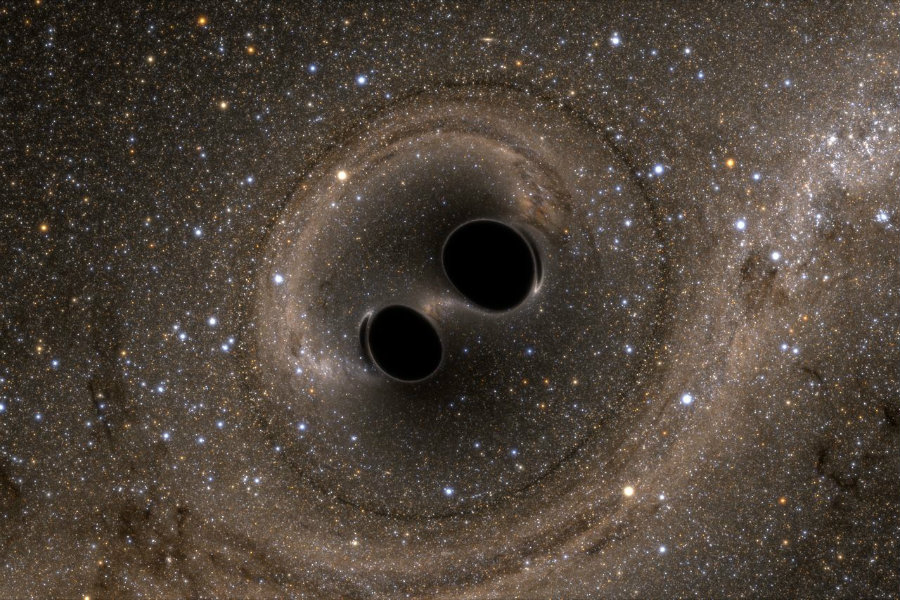Astronomers are attempting to capture the very first photograph of a black hole. To achieve this, they will use a system of radio telescopes around the world to get more information about the gigantic black hole located at the center of the Milky Way, which is referred to as Sagittarius A* (Sgr A*).
For the next ten days, there will be a campaign named ‘The Event Horizon Telescope’ to capture photographs of black holes. The campaign will include eight radio observatories at six locations in the world, which will be trying to prove what Albert Einstein said around 100 years ago in his General Theory of Relativity.

Scientists are trying to photograph Sagittarius A*’ event horizon
Sagittarius A* is four times the size of the sun. Astronomers expect to shoot the Sgr A*’ event horizon, which is the point of no return since nothing -not even light– can escape from it. The event horizon of the Sagittarius A* is 26.000 light-years away from planet Earth.
The black hole’s point of no return is a tiny shadow against a glowing backdrop of radiation in the center of the galaxy. The project is known as the Event Horizon Telescope (ETH), and it includes observatories from Arizona, Mexico, Hawaii, California, Spain, Chile and Antarctica which are going to collect data at scale with no precedents.

“These are the observations that will help us to sort through all the wild theories about black holes — and there are many wild theories,” said Gopal Narayanan, an astronomy research professor at the University of Massachusetts Amherst. “With data from this project, we will understand things about black holes that we have never understood before.”
Astronomers have known about the existence of Sagittarius A* in the center of the Milky way since the 70s, but until this moment, having a way to capture photographs of black holes was believed to be impossible.
Through this campaign, the EHT is also planning to obtain more information about the supermassive black hole in the center of galaxy M87, which is 53.5 million light-years away. This distant massive black hole is about six times bigger than the sun, and its event horizon is larger than that of Sagittarius A*.
Einstein’s General Theory of Relativity might be true
This campaign might prove that black holes exist and it will give more relevance to Einstein’s General Theory of Relativity. Einstein predicted that the universe was filled with massive objects with a high density. Then, Einstein became skeptical of his theory. However, it was never entirely dismissed, and now it could face one of its biggest challenges with this new experiment. Nobody has ever seen a black hole directly, but scientists believe that in every galaxy there is a supermassive black hole.
Robert Blandford, an astronomer at Stanford University, said that it is easy for people to think of black holes as science fiction but they are not. Scientists have gathered a lot of data that suggests the existence of black holes; as well, scientists have recently detected gravitational waves produced by colliding black holes. These observations will help astronomers to calculate the accurate mass, spin and different characteristics of gigantic black holes.
“At the very heart of Einstein’s general theory of relativity, there is a notion that quantum mechanics and general relativity can be melded, that there is a grand, unified theory of fundamental concepts,” Narayanan said. “The place to study that is at the event horizon of a black hole.”
The black holes’ paradox
Astronomers identify black holes due to the superheated plasma that surrounds them because they are completely black by definition. This bright plasma works somehow as a flashlight; they generate a silhouette that astronomers can detect at certain wavelengths. Due to the Doppler Effect, photons are going to boost the brightness while the protons on the other side of the black hole will dim.

“In a paradox of their own gravity, black holes can be some of the brightest things in the sky,” Doeleman says. “When gas and dust fall toward the ravenous supermassive black hole, it is heated to billions of degrees and can be so bright that it outshines the galaxy itself”
All the data collected will go to the central processing facility at the Massachusetts Institute of Technology’s Haystack Observatory. Then, the data will go through a process of calibration given the different weathers and conditions existing where the participating observatories are. According to the EHT, the first results of the experiment will be published next year.
Source: NBC News
